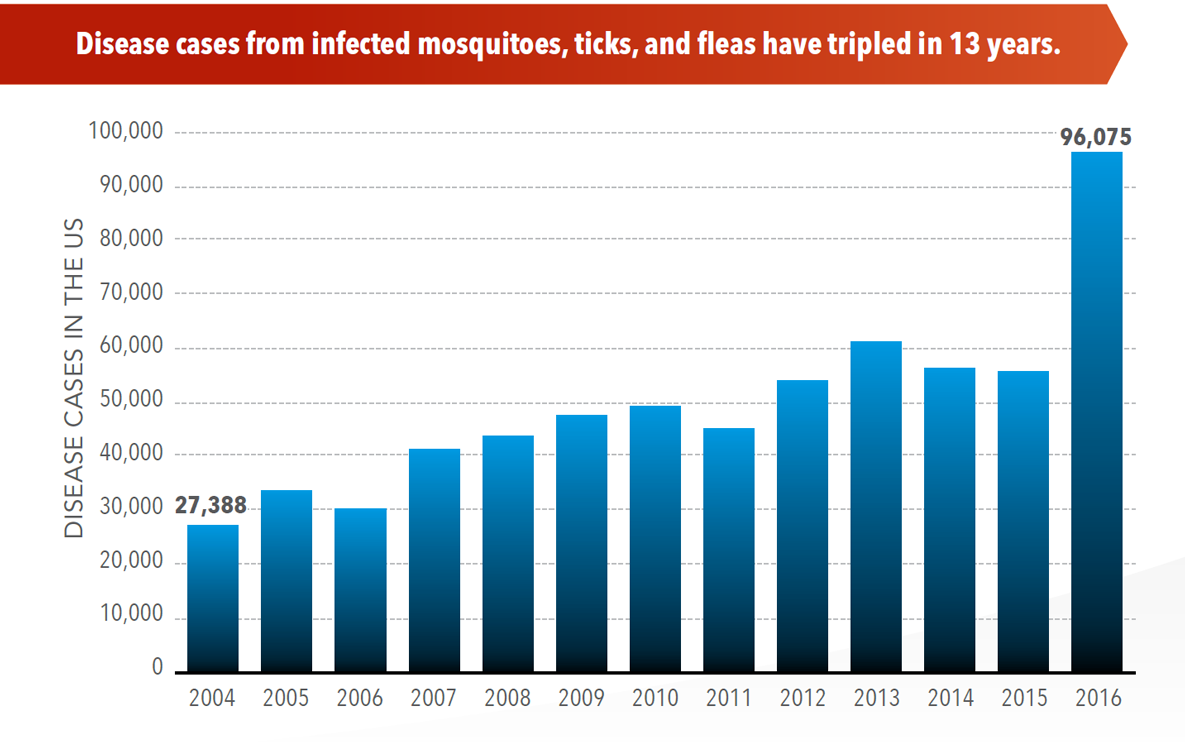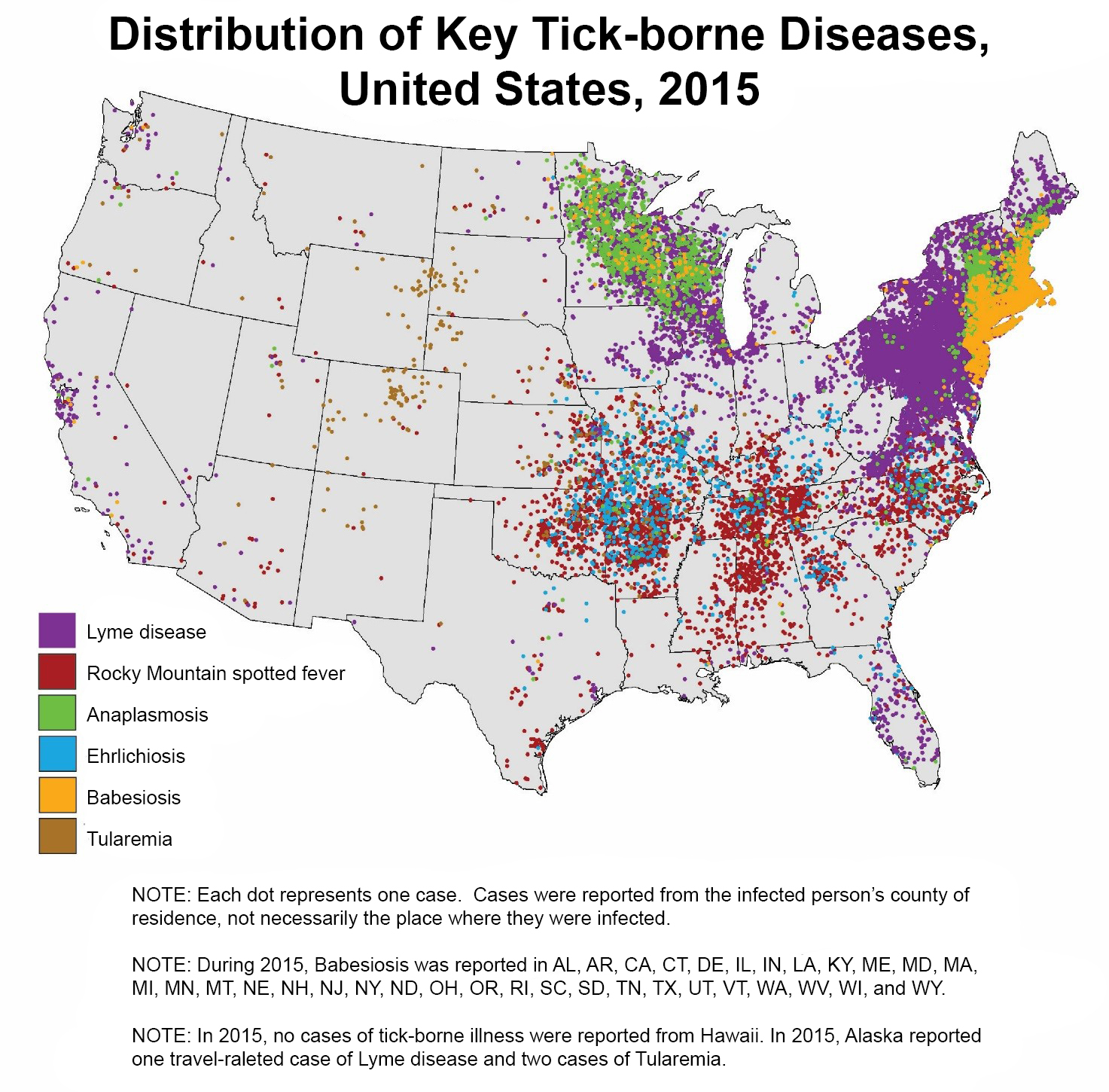Vector-Borne Disease Testing
Since MDL’s inception in 1997, we have provided our clients with the most cutting-edge molecular testing for vector-borne disease. Our laboratory has always poured resources into vector-borne research, developing and enhancing tests in concert with our national and international clinician clients. MDL was the first lab to identify and report, in peer-reviewed scientific journals, co-infections of Ixodes scapularis (deer tick) with B. burgdorferi and B. henselae. (Eskow E, Rao RV, and Mordechai E. 2001. Concurrent Infection of the central nervous system by Borrelia burgdorferi and Bartonella henselae: evidence for a novel tick-borne disease complex. Arch Neurol. 58(9): 1357-63.)
Unfortunately, new tick- and mosquito-borne diseases continue to emerge, increasing in prevalence year after year. The Centers for Disease Control and Prevention (CDC) has reported that the number of disease cases from mosquitoes, ticks, and fleas has tripled from 2004 to 2016 (Figure 1).

Ticks and mosquitos that carry bacterial, parasitic, and viral pathogens continue to increase in number, species, and geographic range. Currently, tick-borne diseases are widely distributed throughout the United States, with major concentrations in the Northeast, Upper Midwest, and across the middle of the Midwest and Atlantic states (Figure 2).
These regions are endemic to multiple tick-borne diseases. Co-infections or multiple infections from a single tick bite is not uncommon. The Northeast and Upper Midwest regions report a majority of Lyme disease, Anaplasmosis, Ehrlichiosis, and Babesiosis cases. The middle states of the Midwest and the Atlantic states report a majority of Rocky Mountain spotted fever and Ehrlichiosis cases.
As new vectors and vector-borne pathogens continue to emerge, for example the Asian Longhorn Tick and Borrelia miyamotoi, respectively, we have renewed our efforts to provide the most comprehensive vector-borne disease test menu. This comprehensive testing, direct (PCR and tick identification) and indirect (serology), allows clinicians to determine the level of risk, the pathogen(s) associated with often-overlapping symptomatology, the most effective antimicrobial treatment for active infections, and appropriate prophylactic treatment for exposure.

